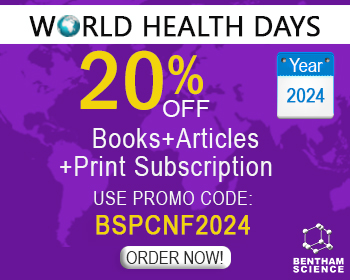Abstract
Atrial fibrillation (AF) is the most common clinically encountered arrhythmia affecting 0.4% of the general population. Its prevalence increases with age, affecting more than 6% of people over 80 years of age. The annual risk of ischemic stroke in patients with lone AF is approximately 1.3%. This annual risk increases up to 10% -12% in patients with a prior stroke or transient ischemic attack. Randomized clinical trials (RCT) comparing adjusted-dose oral anticoagulation and placebo showed a risk reduction of 61% (95% CI 47% to 71%). The absolute risk reduction for stroke with oral anticoagulants is about 3% per year. Aspirin has been shown in meta-analyses to have on average a 20-25% relative risk reduction, and is inferior to oral anticoagulants. In high risk patients with AF warfarin is a class I ACC/AHA indication unless there is a contraindication for anticoagulation. Unfortunately, this therapy requires frequent monitoring with blood samples and the interaction with food and several medications makes its use difficult and sometimes unreliable. It requires strict patient compliance and its use is also linked to potentially serious bleeding complications. In clinical practice, less than 60% of patients who do not have contraindications to oral anticoagulation are actually receiving them. Additionally, of those that receive oral anticoagulation, less than 50% are consistently within therapeutic targets. As such, the “real world” efficacy of a strategy towards prescribing oral anticoagulants is likely significantly lower than that demonstrated in clinical trials. As such, the need to discover other methods of anticoagulation with oral bioavailability, predictable pharmacokinetics, and minimal interactions with diet and other pharmacological agents is imperative. In high risk patients with AF warfarin is a class I ACC/AHA indication unless there is a contraindication for anticoagulation. Unfortunately, this therapy requires frequent monitoring with blood samples and the interaction with food and several medications makes its use difficult and sometimes unreliable. It requires strict patient compliance and its use is also linked to potentially serious bleeding complications. In clinical practice, less than 60% of patients who do not have contraindications to oral anticoagulation are actually receiving them. Additionally, of those that receive oral anticoagulation, less than 50% are consistently within therapeutic targets. As such, the “real world” efficacy of a strategy towards prescribing oral anticoagulants is likely significantly lower than that demonstrated in clinical trials. As such, the need to discover other methods of anticoagulation with oral bioavailability, predictable pharmacokinetics, and minimal interactions with diet and other pharmacological agents is imperative. Low molecular weight heparin has a more predictable bioavailability and a longer half-life, but its subcutaneous mode of administration and long-term risks, in particular, osteoporosis makes the chronic use of this medication non-feasible. An-tiplatelet agents such as clopidogrel have proven efficacy and superiority compared to aspirin to prevent systemic vascular events in at-risk patient populations, but currently they do not play an important role in the prevention of AF related thromboembolic events. The ACTIVE study is a randomized trial comparing the combination of clopidogrel and aspirin therapy to oral anticoagulation with warfarin in patients with AF, and was unfortunately terminated prematurely by the data safety and monitoring board because of increased events in the antiplatelet arm. Direct thrombin inhibitors, such as ximelagatran, may be as effective as warfarin for stroke-risk reduction in patients with AF. No anticoagulation monitoring is needed and it has excellent bioavailability, with a twice-daily oral dose. Elevation of liver enzymes was an initial concern regarding the use of this new drug, which is not available for general use. Ongoing pharmacological research and future clinical trials may one day leave the “warfarin days” behind. Unfortunately, the new therapies that are being tested seem to be at least several years away from being available on a widespread basis. In this review, we discuss the underlying pathophysiology of AF and stroke. We also provide a comprehensive discussion regarding various available therapies to treat AF.
Keywords: left atrium (LA), effective refractory period (ERP), C - reactive protein (CRP), Antithrombotic Therapy, stroke risk factors, Antiarrhythmic

























